
Fenton Wells has built several pulpwood flat cars that reflect Southern Railway prototypes. He sent his prototype details and model building tips to share with blog readers.
Pulp and paper products were always major commodities for the Southern Railway. Their biggest customer was Champion paper in Canton, North Carolina, on the old Murphy Branch. Many loads of pulpwood and coal were delivered with finished paper products shipping out.
Pulpwood is any non-hardwood usually pine, but other wood can be pulverized and to make a slurry combined with other chemicals for paper production.
At first, labor was relatively inexpensive and the 5-foot long pieces of pulpwood were loaded in whatever was available, boxcars, ventilated boxcars, and stock cars. To reduce labor costs and turnaround time, railroads turned to flat cars with bulkheads. These cars had a slanted floor that cants the logs inward to prevent them falling off during transit.
Pulpwood was one of the most expensive for the Southern due to the liability costs associated with the logs not making the entire trip on the cars. So, to make up for this the Southern negotiated with the paper companies and brought the logs in at basically cost for the paper company in order to ship their finished products in Southern Railway boxcars.
The Southern’s first Pulpwood racks were converted in 1934-37 from 40-foot flatcars built in 1926.
1115000-116599 – 267 cars converted for Champion Paper service
117500-117999 – 201 cars converted for Champion Paper service
325000-325579 – 30 cars (NO&NE) converted for Masonite Corporation service
300230-300472 – 40 cars (AGS) converted for Gulf States Paper service
Model
I used the old SRHA resin flat car kit as a starter. I had one in inventory and bought several more when Wright Trak sold them. I am uncertain who has them today.
Since the flat car floors do not have an inverted V-shape, the SR used 2×12 boards attached to stakes in the stake pockets to stack the outer edges of the logs for a loaded inverted ‘V’ shape.
I found a drawing for the ends in the Car Builders Cyclopedia and used that to build the ends for the car converted from flat cars.
SU boxcar conversions
By the late 1940’s, more pulpwood racks were needed. Many of the 36-foot SU boxcars were showing their age and new 1937 AAR cars were arriving.
The company decided to start kit-bashing the SU boxcars into pulp wood racks. 2,710 cars were converted between 1940 and 1951.
114000-114999 – 1000 cars converted, 100 before WW2 and the rest after the war
124000-125559 – 1500 cars converted, 83 cars by 1947 the rest by July 1950
301000-301099 – 100 cars (AGS) converted by July 1950
326000-326009 – 10 cars (NO&NE) converted by April 1951
414000-414099 – 100 cars (GSF) converted April 1951


Model
For these cars, I used parts from Westerfield Models and Funaro and Camerlengo kits. Chad Boas also cast some new ends for me with indentations on the inside so the cars could be run empty. I have not figured out how to install V-shaped floors yet. These empty cars might be too light to track well on a layout.
Again, I used prototype drawings to guide my modeling work.
Furniture car conversions
Southern converted 40-foot, double-sheathed automobile/furniture cars for pulpwood racks at Spencer in 1953.
The Southern converted 900 cars to pulpwood service in 1953. 1928-built furniture cars were rebuilt into the following car series.
12600-126299 – 300 cars
250100-250399 – 300 cars converted and renumbered to 126548-129774, December 1953
301100-301299 – 200 cars (AGS) converted and renumbered to 129775-129924, December 1953
326100-326199 – 100 cars (NO&NE) converted and renumbered to 129925-129999, December 1953
Models
Wright Trak once offered the furniture car converted pulpwood cars as HO scale resin kits, seen above. I added corner angles at the bulkheads as they were slanting inward and creating a slight bow to the car. I also added weights for proper tracking.
I added a partial load to a Wright Trak model. These also came the correct decals.
Another modeling option
Wright Trak is no longer in business, so I devised an alternative method to model the 1951 SR racks converted from furniture cars. Years ago, I bashed these using the 40-foot Athearn pulpwood racks to make a close stand-ins. I used the old Red Ball plastic ends and Champ decals, which are incorrect for these cars. The Champ Southern lettering and numbers are 12-inches tall, which is incorrect. The prototype used 8-inch tall letters during the transition era. However, these are easy to bash and make excellent stand-ins.
I cut off the top of the ends of the Athearn car and cut down the inside of the end bulkhead to thin it up and match the prototype. I added sheet styrene to the top and the inside of the bulkhead, then installed a cut-down Red Ball car end for the bulkhead exterior. Today we modelers could have the ends of the Sunshine kit for the boxcar copied with permission and make a correct LP. I had no drawings so did all the cutting based upon prototype photos.
The modeler can replace the car bottom if wanted so that they can be run empty, however being a lazy modeler, I just sanded the first few layers of logs down, so they appear canted. Again, these are stand-ins and at much lower cost than the resin-bashed versions.
Later upgrades
Modern modelers may find these furniture car conversions useful as they were upgraded with extended ends with 70-ton capacity trucks and lasted into the 1970’s.
As someone said years ago, “Model Railroading is Fun!” – Fenton Wells
Questions and comments can be posted below. Please follow the instructions so your comment can be posted. All comments are reviewed and approved before they appear. To subscribe to this blog, add your email address to the function at the bottom of the right column on the main page. Share the blog link with other model railroaders.


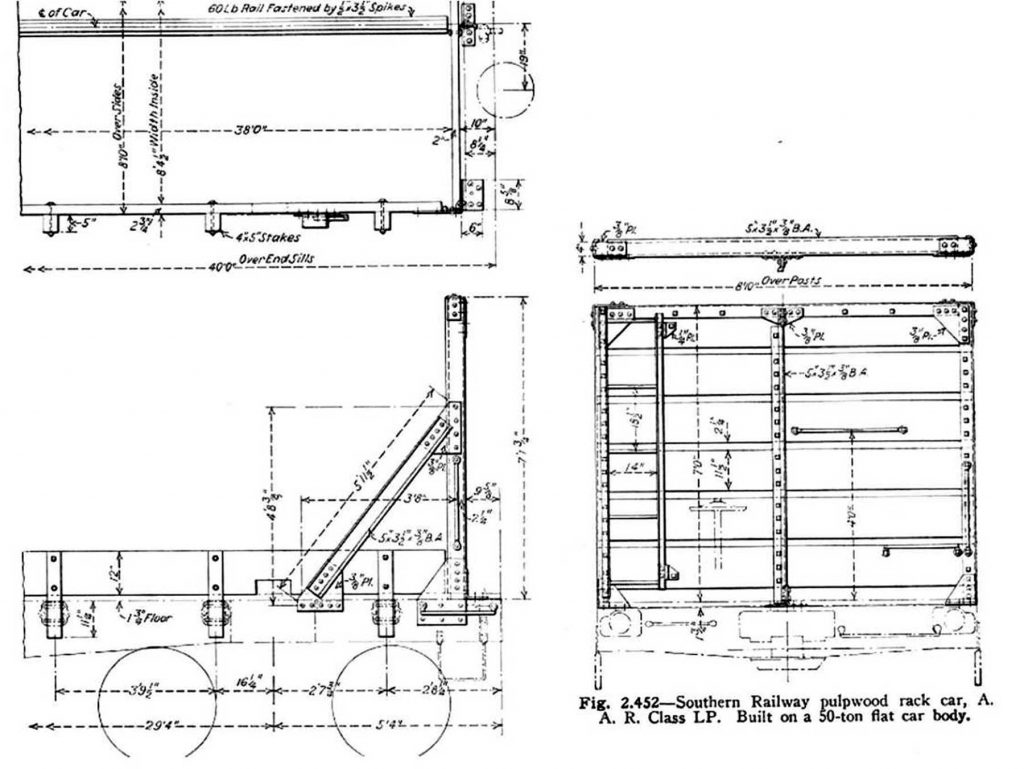

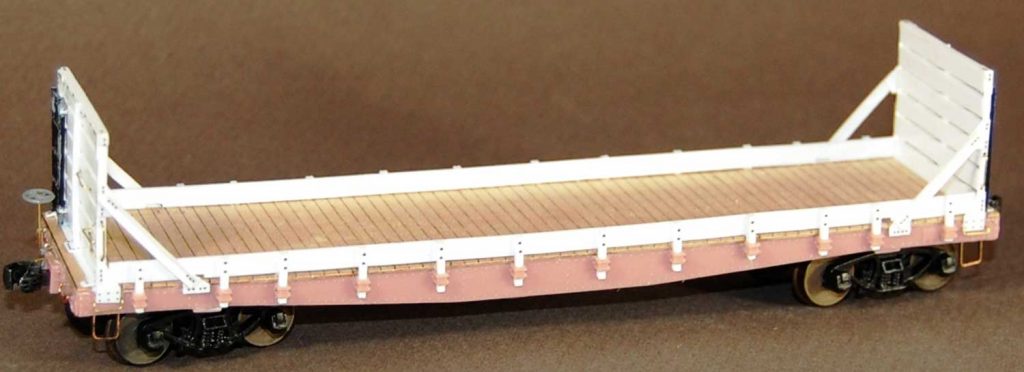



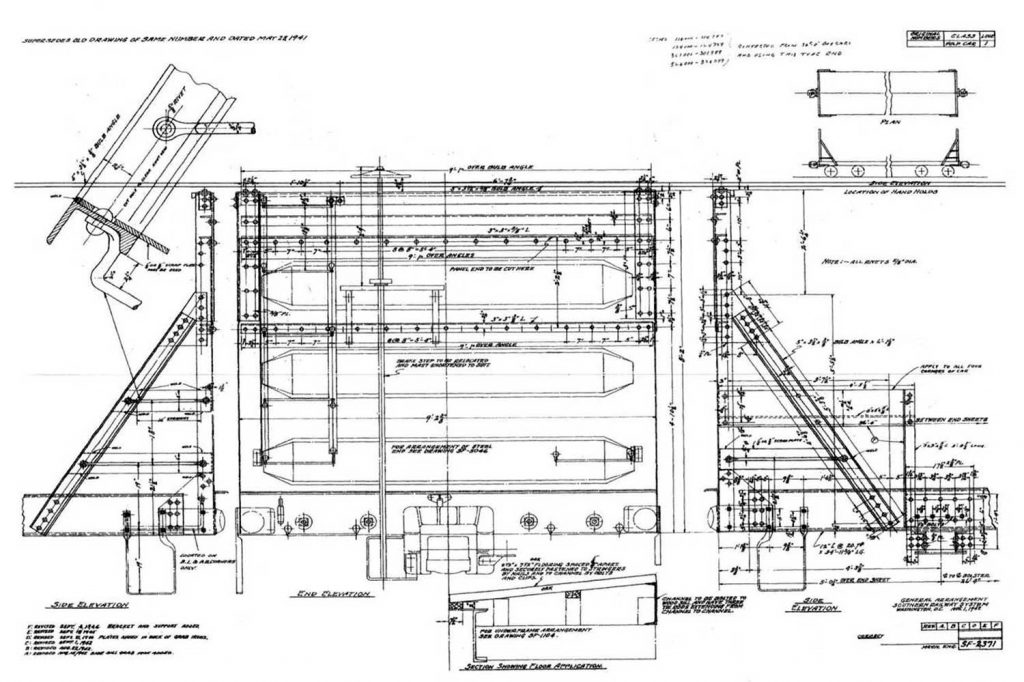

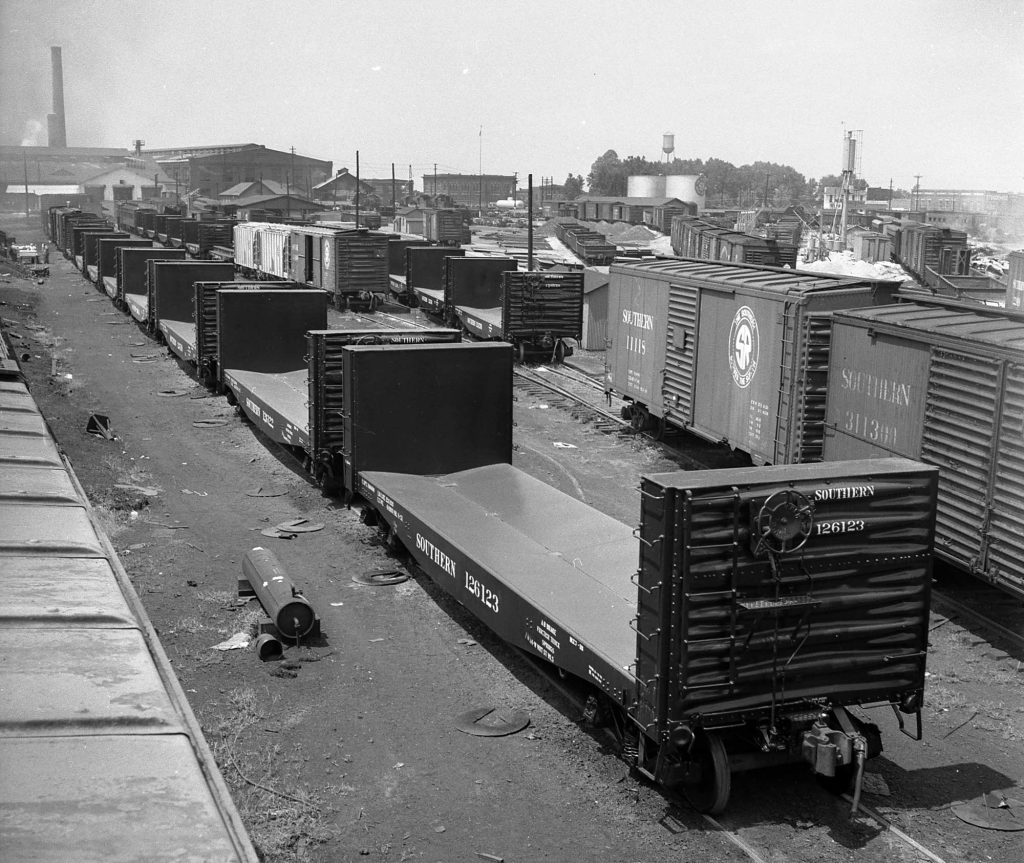



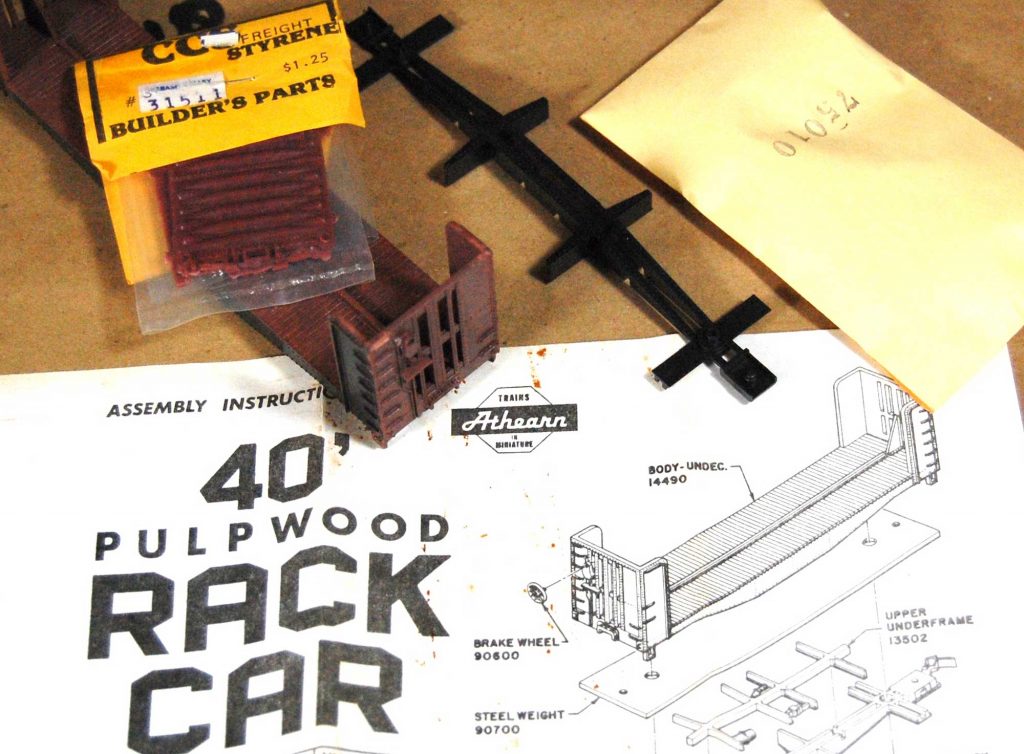



Nice model work! Just wanted to know if anybody knows if drawings of the early rebuilds were published in any of the magazine publications? The best drawings were usually in Mainline Modeler, to bad Bob folded up. I have 3 of the Wright Trak models but they are a little new for my era. Any help is appreciated, thanks.
If you are interested in selling one of the Southern pulpwood racks, let me know. Thanks.
Great article. I hope to build some for my layout someday and this article was very useful!
Outstanding, Fenton! Wood racks are a most-overlooked and underappreciated subject. I’ve done a lot of research on SAL cars of the 40s and 50s–it’s all great stuff. Thanks for bringing us good stuff and then showing us how to model it. John Golden
I designed/produced the Southern wood racks in HO and S under the Smoky Mountain Model Works Inc name. The prototype was based on Spencer Shop rebuilt double door boxcars in 1952-52. The HO patterns were sold to Wright Trak Models about 8 years ago along with the rest of my HO line. Those patterns are now owned by SRHA.
The S scale patterns are out of production but still owned by me. An O scale version was never patterned and there are no plans to make them or reissue the S kits.
I’m in S scale and have a couple of the Furniture car rebuilts from Jim King models. Enjoyed reading your research.
Very helpful and well done article. Will you be offering a kit for the 1950s period cars?
Allen, RCW has no plans to produce Southern pulpwood cars at this time. – Eric H.
Fenton —
Beautiful work! As a fellow woodrack modeler (L&N), woodrack modeling is especially fun, since in many cases we are duplicating the same kitbashing moves that the prototype road made. L&N’s conversions were similar to SR’s — from obsolescent ventilated boxcars, flats, and gondolas. Your pulpwood loads continue to impress; nothing even close grows out here on the high plains.
Regards,
Bob Chapman
Those cars are the most interesting and best executed pulp racks I’ve seen. The log loads are very well done and highly realistic. I’m just thankful that I don’t need pulp racks in granger country. Cutting all those twigs can’t be fun.
I believe Southbound Model Works & Decal Company purchase on art of Wrighttrax’s line. Drop them a line on the Southern Cars and decals.
Sonny, I checked the the Southbound owner and he did not get those masters. I need to check with the SRHA. – Eric H.
I enjoyed your article on the various pulpwood cars owned by the SR and your nicely detailed models and modeling techniques.
Thanks for sharing!